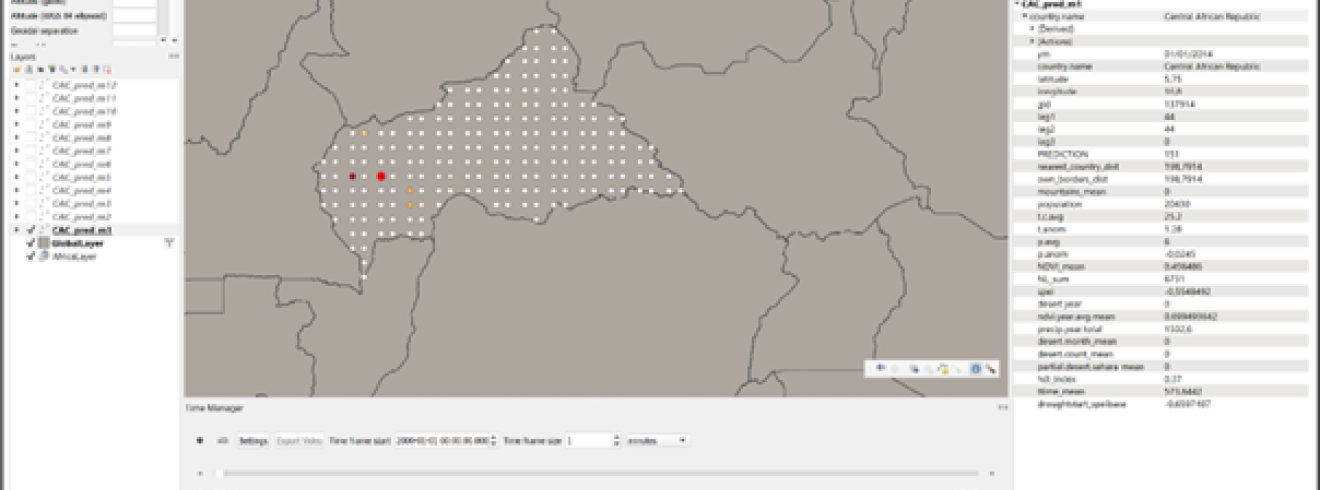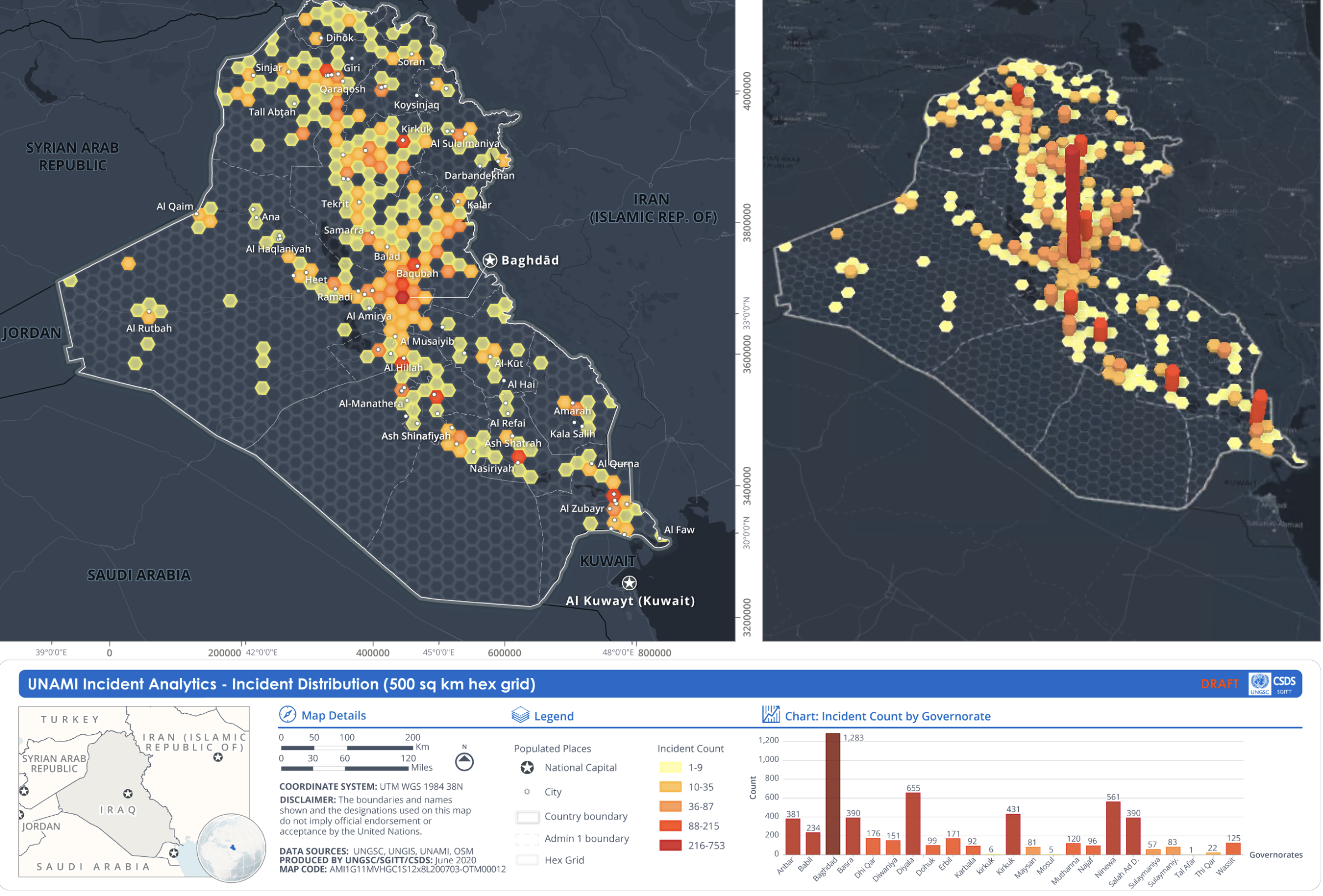Predictive analysis can significantly enhance strategic planning and monitoring in peacekeeping operations. In his article “Machine Learning and Conflict Prediction,”* Chris Perry notes, the development of a “robust, accurate and effective conflict early warning system” has long been a priority for the United Nations.
To that end, as part of UNGSC’s Academia Partnership Programme, students from Barcelona’s ESADE University have developed a novel data model.
While most models provide insights for conflict emergence at the national level, this one may forecast incidents at the sub-national level with a high degree of location specificity, such as a sector of a peacekeeping mission, or an area monitored by a particular battalion. In some instances, it may even estimate the number of fatalities likely to occur in a specific area.
Another differentiating factor is the data on which the analysis is based. Whereas existing UN applications utilize real-time incident mapping only, this new model goes further, integrating open-source conflict data with data on other variables commonly related to conflict emergence (e.g., environmental conditions, poverty, population density, health, political representation, etc.).**
In the same C. Perry article referenced above, the author states that “a refined data selection methodology combined with strategic use of machine learning algorithms could … offer a significant addition to the early warning toolkit.” Indeed, this new data model addresses that consideration, applying geospatial and machine learning technologies to multi-variant conflict analysis.
While still in its infancy, the model has shown promising results. When applied to a real peacekeeping environment, namely the Central African Republic, its monthly conflict warnings proved accurate.
Going forward, it may offer applications for various areas within the UN system, contributing to the UN's ability to prevent conflict and advance peace and security.
* Perry, C 2013. Machine Learning and Conflict Prediction: A Use Case. Stability: International Journal of Security & Development, 2(3): 56, pp. 1-18,
**Datasets utilized include AfroGrid, Human Development Index indicators, ACLED (Armed Conflict Location & Event Data), PRIO-GRID, as well as UN Common Operational Geospatial Information.


